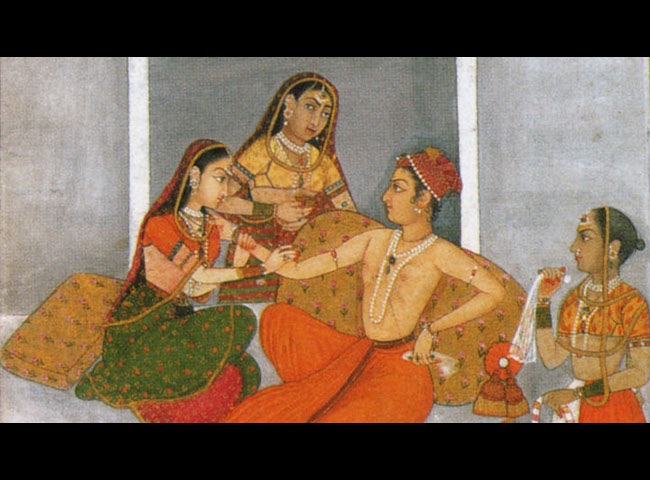The Sword and the Flute
-
Réalisé par James Ivory • Écrit par James Ivory
-
États-Unis • 1959 • 20 minutes • 35 mm • Couleur
- Réalisation :
James Ivory - Écriture :
James Ivory - Image :
Mindaugis Bagdon - Son :
Rolf Epstein - Montage :
James Ivory - Musique originale :
T. Visvanathan, Ravi Shankar, Ustad Ali Akbar Khan
- Production (structure) :
James Ivory - Ayant droit :
James Ivory
- N° ISAN :
non renseigné
Résumé
L'histoire des miniatures indiennes, peintures développées selon deux écoles principales, celle des Moghols et celle des Rajputs.
"La peinture miniature indienne est le sujet central du film, mais il s’agit en réalité d’une sorte de rêve de l’Inde, imaginé par quelqu’un qui n’y est jamais allé, qui ne connaît le pays qu’à travers son art et sa musique."
(James Ivory)
Ivory's second documentary, The Sword and the Flute, also dealing with schools of art, grew out of his experience in making Venice: Theme and Variations. Only here, instead of photographing works by the Italian masters, he has used superb examples of Indian miniature paintings. Ivory's intelligent script, narrated with feeling by Saeed Jaffrey, and accompanied by the music of Ravi Shankar and Ali Akbar Khan, traces the history of Indian miniature painting after the Moghul invasion as it develops into two principal schools, the Moghul (Muslim) and the Rajput (Hindu). The Moghul miniatures reflect an interest in historical events and the life of the court, while those of the Rajput emphasize otherworldly concerns, the yearning for transcendence, but both involve the viewer immediately in a world that is exotic and ravishing. Ivory is fascinated by the faces (and prominent eyes) of his figures, the garments they wear, and the sharply noted details of their surroundings: the figures seem almost to leap at the viewer. Compared to Venice, the dramas Ivory creates through the Indian scenes are tauter and give a greater sense of complexity, which comes in part from the tension in Ivory between his intellectual role as a close observer of culture and his intimate, empathetic response to the paintings' exceptional sensuousness and romantic feeling. The cameraman for the film was another USC cinema student, Mindaugis Bagdon, and his and Ivory's photography of the Indian miniatures proved so effective that Ivory would use the technique later, also with striking effect, in his film Hullabaloo Over Georgie and Bonnie's Pictures.
Mot(s)-clé(s) thématique(s)
Comment avoir accès au film ?
-
Édition DVD
- Il n'existe pas d'édition DVD à notre connaissance
-
Accès VOD
- Il n'existe pas d'accès en VOD à notre connaissance
- Distribution
- Aide sur les moyens d'accéder à un film
